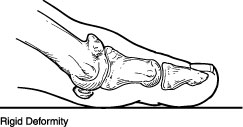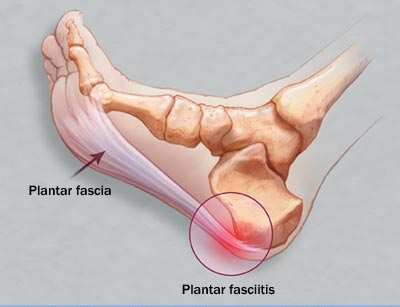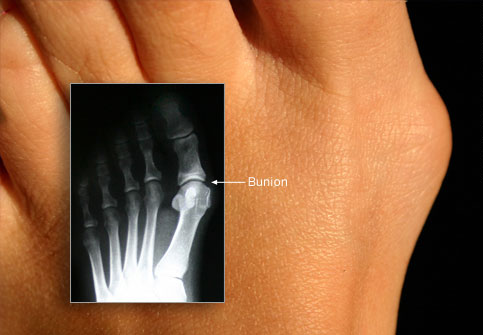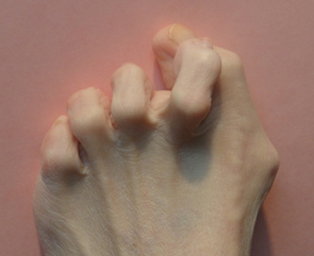Before anything else, it would be proper if we differentiate how the role of the podiatric surgeon differs from that of an ordinary podiatrist.
Podiatry is a branch of medicine that deals with the diagnosis and treatment of ailments concerning the feet, ankles, and anything that is part of the lower extremities. A podiatrist, then, is a medical doctor (DPM) that studies, diagnoses, and treats the disorders of the body parts mentioned previously.[1]
Podiatric surgery is the surgical treatment of the foot and its associated structures.[2] More or less, a podiatrist or podiatric physician, is also trained to perform surgery on the said body parts if the diagnosis requires it.
Given that most podiatrists are also schooled to be podiatric surgeons, what then are the conditions in which they advise their patients to undergo surgical treatment of the foot or any part of the body’s lower appendages?
Morton’s Neuroma
The term neuroma pertains to a painful condition of a nerve, and it usually called as a “pinched nerve.” It is caused by a tumor coming out from the nerve cells. So when you talked about Morton’s Neuroma, you are referring to an inflamed nerve that causes swelling commonly on the location between the foot and the big toe.
If you have Morton’s Neuroma, you would feel a sharp burning pain at the bottom of your foot. The pain sometimes progresses into feeling of numbness. This sensation of pain and numbness will often extend and felt on the toes.
Morton’s Neuroma is normally caused when the ball of the foot or the base of it is regularly pressed and pinched, making the nerve swell and thicken.
If you have this disorder, the podiatrist will advise you to wear wider shoes with comfortable insoles. To reduce the pain and swelling, alcohol and steroid injection can be performed. If surgery is required, the swollen nerve will be cut and it will take around 21 days to recover.
Rock legend, Steven Tyler of Aerosmith is known to have had Morton’s Neuroma and underwent surgery to cure it.[3]
Stiff Big Toe (Hallux Rigidus)
 Hallux Rigidus is an ailment on the joint just below the big toe. It causes pain on that part and, eventually, may lead to stiffness which makes it harder to bend. You may think that this disorder is similar to Morton’s neuroma, but unlike Morton’s which is caused by a tumor on the nerve, Hallux Rigidus originates from a degenerative form of arthritis. ‘Hallux” refers to the big toe, while “Rigidus” indicates that the toe is rigid and cannot move. [4]
Hallux Rigidus is an ailment on the joint just below the big toe. It causes pain on that part and, eventually, may lead to stiffness which makes it harder to bend. You may think that this disorder is similar to Morton’s neuroma, but unlike Morton’s which is caused by a tumor on the nerve, Hallux Rigidus originates from a degenerative form of arthritis. ‘Hallux” refers to the big toe, while “Rigidus” indicates that the toe is rigid and cannot move. [4]
This ailment is characterized by pain and/or stiffness on the big toe when standing or walking. Sometimes the pain is exacerbated by damp and cold weather.
Stiff Big Toe is often caused by habitual trauma on the toe. Often times, people who are afflicted by it have a family history of such, which is a result of inheriting a type of foot that has the tendency to acquire this condition.
Podiatrists advice patients with Stiff Big Toe to wear shoes with starchy soles. Applying natural lubricants and steroid injection may aid in easing the discomfort but will only be for short-term. In case of surgery, the podiatric surgeon will clean up the joint and (sometimes) replace the damaged cartilages with small implants. Recovery from surgery may take around 42 days.
Plantar Fasciitis
 Jogger’s Heel as it is otherwise called, Plantar Fasciitis is one of the most common causes of heel pain experienced by many. This condition is brought about by a torn or inflamed ligament on the heel.
Jogger’s Heel as it is otherwise called, Plantar Fasciitis is one of the most common causes of heel pain experienced by many. This condition is brought about by a torn or inflamed ligament on the heel.
Patients who have Plantar Fasciitis usually experience a stabbing pain upon doing their first steps after waking up in the morning. The pain will vanish during the later part of the day, but will recur once they stand after a long period of sitting.[5]
Runners are often the victims of this disorder, as they usually incur injuries to their heels. However, people who are obese and overweight and those who wear shoes with hard heels are also prone to being afflicted with Plantar Fasciitis.
Treatment of Jogger’s Heel involves stretching exercise of tight foot and muscles while ice and insoles are being applied. Steroid injections, night splints, and shock wave therapy can be performed as additional treatments. If surgery is involved, normal recovery will take 18 months but proper treatment and care can speed up the process.
Bunions (Hallux Valgus)
 Hallux Valgus or Bunion is the most popularly known foot deformity. It is seen as the abnormal and bony bump between the toe and the foot. The usual scenario is that the toe bends towards the other toes.
Hallux Valgus or Bunion is the most popularly known foot deformity. It is seen as the abnormal and bony bump between the toe and the foot. The usual scenario is that the toe bends towards the other toes.
Bunions can be excruciatingly painful. If you have bunions, your afflicted foot is vulnerable to extreme friction and extra pressure from the shoes you are wearing.
Similar to the Stiff Big Toe, bunions can run among family members. It usually starts in early adulthood and gets worse with age. Poor shoe fitting aggravates the condition. Women who wear high-heels and pointed footwear are very susceptible to getting bunions.
Wearing of comfortably fitting footwear coupled with pads and soft insoles are recommended to those who are prone to bunions. Surgery is the best option to cure Halux Valgus and it will normally take 42 days to heal.
Hammertoe
 The Hammertoe disorder occurs when the small toes have an abnormal bent or conjecture. This condition puts additional pressure on your toes particularly when wearing shoes, and it can cause other problems to occur eventually.
The Hammertoe disorder occurs when the small toes have an abnormal bent or conjecture. This condition puts additional pressure on your toes particularly when wearing shoes, and it can cause other problems to occur eventually.
You are normally to develop hammertoes if you already have bunions. The tendon and muscle imbalance which is being caused by the bending of the big toe results in structural changes on the toes next to it as well.
Treatment is similar to that of bunions. If patient undergoes surgery, the joints of the deformed toes are fused with small implants or surgical pins. They will be removed generally after 28 days. Healing will normally take 6 or 3 weeks, which all depends on the extent of the surgery involved.
On a Final Note
The conditions mentioned above are the top 5 disorders that may necessitate the service of a podiatric surgeon. If you have or you feel something painful or uncomfortable which are similar to the sensations mentioned on the above list, it is recommended that you see a podiatrist and ask for an advice.
References:
www.apma.org/Education/content.cfm?ItemNumber=992 [1]
www.scpod.org/podiatric-surgery [2]
en.wikipedia.org/wiki/Morton’s_neuroma#Morton.27s_neuroma_in_popular_culture [3]
www.foothealthfacts.org/footankleinfo/hallux-rigidus.htm [4]
www.mayoclinic.org/diseases-conditions/plantar-fasciitis/basics/definition/con-20025664 [5]
www.medicinenet.com/mortons_neuroma/article.htm
www.webmd.com/skin-problems-and-treatments/understanding-bunions-basics
www.foothealthfacts.org/footankleinfo/hammertoes.htm
www.ramsayhealth.co.uk/blog/2015/04/13/top-5-conditions-a-podiatric-surgeon-can-help-with-by-mr-antony-wilkinson
